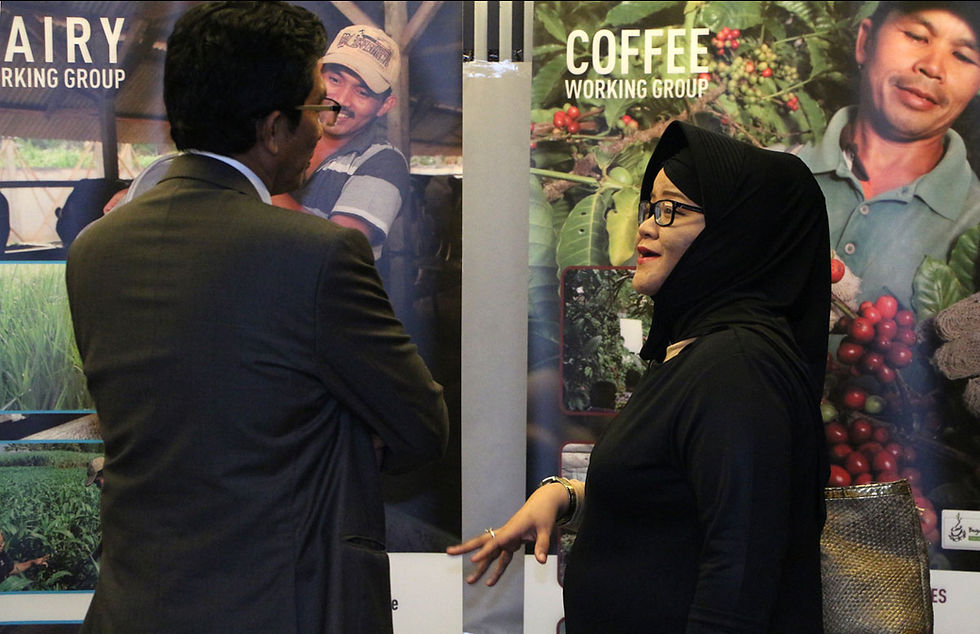PISAgro General Meeting: discussing impact and scale
- Alison Eskesen Director
- Oct 28, 2015
- 2 min read
JAKARTA, INDONESIA - The energy was palpable. People buzzing with ideas and questions. Challenging each other and learning from each other. A collective concentration focused on how to support Indonesian smallholder farmers to improve their farm productivity, profitability and environmental sustainability. This is how I would describe the leaders who came together during the October PISAgro General Meeting.

PISAgro, is one of the leading Grow Asia Country Partnerships. It has nearly 20 corporate members voluntarily collaborating with NGOs, donors, and the Government of Indonesia on 10 value chains that aim to help smallholder farmers in Indonesia. The early success of PISAgro has rightfully garnered additional interest from the Government of Indonesia, and at the General Meeting we were privileged to hear from the Ministry of Agriculture about their intentions for the Regional Based Agriculture Development Program.
The opportunity to brainstorm with thought leaders is unique. The opportunity to have so many industry scions, development change-makers, and policy leaders voluntarily come together to share about sustainable agriculture approaches, to discuss their need for monitoring and evaluation, and to explore how to scale up positive impacts on smallholder farmers is distinctive to PISAgro and other Grow Asia partnership platforms.
One of the many value chains that I was impressed with during the PISAgro General Meeting is corn. Rather than a one-size-fits-all plan, the PISAgro corn working group is implementing – with the leadership of Syngenta – three tailored approaches to support farmers. In East Java, corn farmers receive training from Monsanto on good agricultural practices. They gain access to financing from BRIand receive additional training from Cargill about post-harvest management. Through farmer organizations, Cargill enters a contract yield agreement. Early results show that this coordinated value chain approach has increased corn yield by 14%, resulting in an additional US$252/hectare income for participating farmers. A second approach is with Syngenta, Bank Andara, BPR, and Mercy Corps. Syngenta provides farmer training. Bank Andara extends capital to BPR to on-lend to participating smallholder farmers for input purchases. Mercy Corps provides financial literacy training, helping to reduce the risk of voluntary default. Farmers participating in this project have experienced a 20% yield improvement and earned an additional US$175/hectare of income. The third approach is just getting started and will focus on helping farmers to inter-crop corn and coconut. Partners leading the activity include: Cargill, Balitpalma, Syngenta, the government, and Winrock International.
This inclusive multi-stakeholder approach transcends the corn value chain. All of PISAgro’s value chain projects engage multiple companies, government, civil society, and often farmer organizations. It is the synergy created by working across the value chain and leveraging each stakeholder’s strength that make the accomplishments of PISAgro even more exciting. By fostering transparent communication and trust among stakeholders, reinforcing a commitment to measuring results, and learning from both the successes and shortcomings of value chain projects, PISAgro is poised to help bring about transformative sustainable agriculture change in its targeted value chains.
The exploration of what is possible when forward thinking leaders join together and volunteer to make change is – what I believe – the source of PISAgro’s energy and momentum. I look forward to continuing to learn about PISAgro’s results on smallholder farm productivity, profitability and environmental sustainability
Alison Eskesen Director, Knowledge and Accountability, Grow Asia alison@growasia.org



